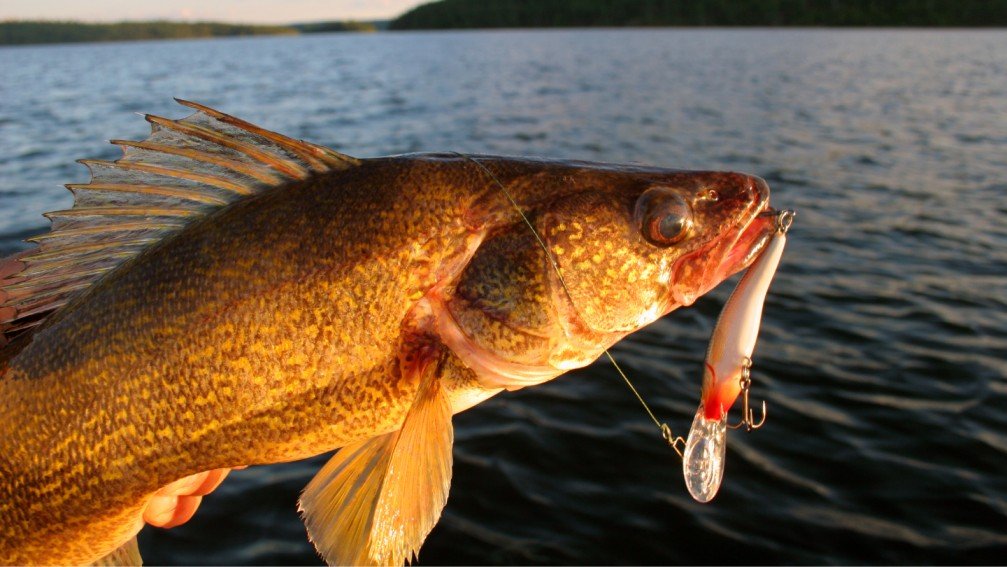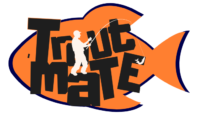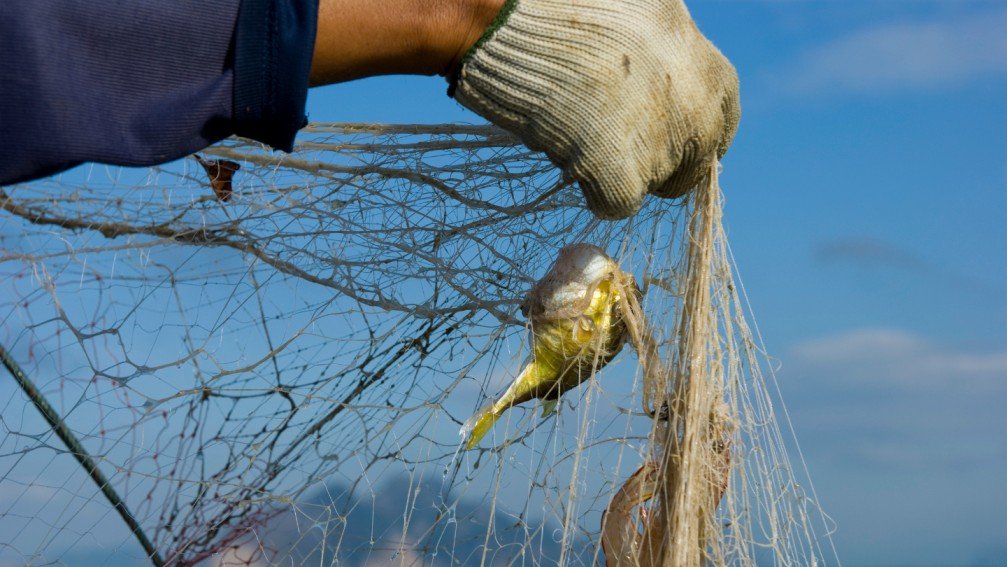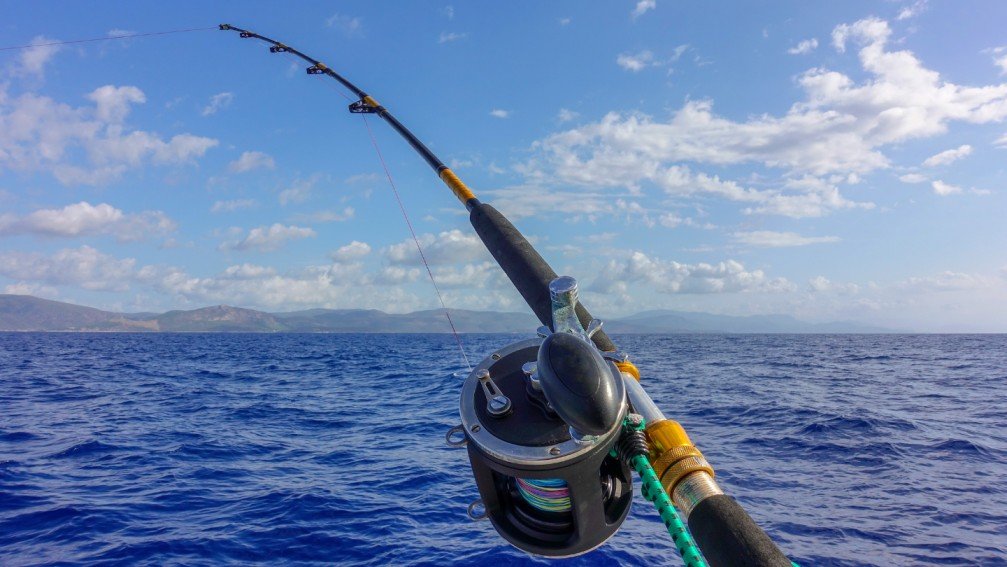To catch fish, choose the right bait and find a suitable fishing spot. Cast your line and wait patiently.
Fishing is a timeless activity that requires patience and skill. Start by selecting the appropriate gear, such as rods, reels, and bait. Research local fishing spots to increase your chances of success. Early mornings or late afternoons are prime times for fishing.
Cast your line gently into the water and keep an eye on your bobber or line. Feel for any tugs or bites and reel in your catch carefully. Practice makes perfect, so don’t get discouraged if you don’t catch anything right away. Enjoy the experience and the serene surroundings.
Choosing The Right Gear
Selecting the appropriate gear is crucial for a successful fishing trip. The right equipment can make your experience enjoyable and fruitful. This section will guide you through choosing the best rod, reel, and fishing line for your needs.
Rod And Reel Selection
Your rod and reel are the backbone of your fishing gear. Choosing the right one depends on the type of fishing you plan to do. Here are some factors to consider:
- Rod Length: Longer rods cast further, while shorter rods offer more control.
- Rod Power: This refers to the rod’s strength. Light power is for small fish, heavy power for big fish.
- Rod Action: Action describes where the rod bends. Fast action bends near the tip, slow action bends closer to the handle.
When selecting a reel, consider these aspects:
- Reel Type: Spinning reels are easy for beginners, baitcasting reels offer more precision.
- Reel Size: Match the reel size to your rod and target fish species.
- Drag System: A smooth drag system helps you handle big fish without breaking your line.
Fishing Line Types
Choosing the right fishing line is essential for catching fish. There are three main types of fishing lines:
- Monofilament Line: This is versatile and easy to use. It is good for beginners.
- Braided Line: This line is very strong and thin. It is great for heavy cover and deep water.
- Fluorocarbon Line: This line is almost invisible underwater. It is ideal for clear water and wary fish.
Each line type has its advantages. Consider the water conditions and fish species when making your choice. For a versatile setup, monofilament is a good starting point.
Bait And Lures
Choosing the right bait and lures is crucial for a successful fishing trip. This section will guide you through the types of bait and lures you can use. Whether you prefer natural baits or artificial lures, knowing what works best will help you catch more fish.
Natural Baits
Natural baits are always a favorite among anglers. They mimic the fish’s natural diet, making them irresistible. Here are some popular natural baits:
- Worms: Earthworms and nightcrawlers are great for freshwater fishing.
- Crickets: Crickets work well for catching bass and bluegill.
- Minnows: Minnows attract larger fish like bass and trout.
- Shrimp: Shrimp are excellent for saltwater fishing.
Keep your bait fresh for the best results. Store them in a cool place and check them often.

Artificial Lures
Artificial lures are designed to mimic the movement of real prey. They can be more convenient than natural baits. Here are some common types of artificial lures:
- Spinnerbaits: Spinnerbaits have blades that spin, attracting fish with their flash.
- Crankbaits: Crankbaits dive and wiggle like small fish, luring predators.
- Jigs: Jigs have weighted heads and are great for vertical fishing.
- Soft Plastics: Soft plastic worms and creatures look like real prey.
Artificial lures come in various colors and sizes. Choose the right one based on the fish species and water conditions.
Here is a quick comparison table of natural baits and artificial lures:
| Natural Baits | Artificial Lures |
| Earthworms, Crickets, Minnows, Shrimp | Spinnerbaits, Crankbaits, Jigs, Soft Plastics |
| Need to be kept fresh | Reusable and durable |
| More attractive to fish | Mimic natural prey movements |
Both natural baits and artificial lures have their advantages. Experiment with both to find what works best for you.
Finding The Perfect Spot
Finding the perfect spot to fish can be tricky. Whether you’re new or experienced, choosing the right spot is crucial. Different locations offer different challenges and rewards. Let’s explore the best places to catch fish.
Freshwater Locations
Freshwater locations are great for beginners. These include lakes, rivers, and ponds. Each offers unique fishing experiences. Some of the best freshwater spots are:
- Lakes: Lakes often have diverse fish species. Look for areas with underwater structures.
- Rivers: Rivers have flowing water, which attracts many fish. Focus on areas with slower currents.
- Ponds: Ponds are small but can be full of fish. Ponds in parks are usually well-stocked.
| Freshwater Location | Key Feature |
| Lakes | Diverse fish species |
| Rivers | Flowing water |
| Ponds | Well-stocked |
Saltwater Spots
Saltwater fishing offers a different challenge. The ocean is vast and full of large fish. Some of the best saltwater spots include:
- Beaches: Beaches are easy to access. Cast your line from the shore.
- Piers: Piers extend into the ocean. They attract many fish due to deeper waters.
- Offshore: Offshore fishing requires a boat. It offers the chance to catch big game fish.
| Saltwater Location | Key Feature |
| Beaches | Easy access |
| Piers | Deeper waters |
| Offshore | Big game fish |
Finding the perfect spot involves knowing your fishing environment. Freshwater locations are great for variety. Saltwater spots offer more adventure. Choose your location wisely for a successful fishing trip.
Credit: www.howtocatchanyfish.com
Fishing Techniques
Fishing can be a relaxing and rewarding activity. Knowing the right techniques can make your fishing trips more successful. In this section, we will cover various fishing techniques to help you catch more fish. We’ll focus on casting methods and trolling tactics.
Casting Methods
Casting is a key skill in fishing. Good casting can help you reach the best spots. Here are some popular casting methods:
- Overhead Cast: This is the most common method. Hold the rod above your shoulder. Swing it forward and release the line.
- Sidearm Cast: Useful in windy conditions. Hold the rod to the side. Swing it horizontally and release the line.
- Roll Cast: Best for tight spaces. Roll the line on the water. Lift the rod and flick it forward.
Trolling Tactics
Trolling is another effective fishing technique. It involves dragging a baited line behind a moving boat. Here are some trolling tactics to consider:
- Speed Control: Adjust your boat’s speed. Slower speeds are better for colder water. Faster speeds work well in warmer water.
- Depth Management: Use different weights and lines. This helps you reach the fish at various depths.
- Lure Selection: Choose the right lure. Match the lure to the type of fish you want to catch.
By mastering these fishing techniques, you can improve your chances of success. Whether you are casting or trolling, each method has its unique benefits. Happy fishing!
Weather And Timing
Weather and timing play a crucial role in the success of your fishing trip. Understanding the right conditions can increase your chances of catching fish. This section will cover key aspects like seasonal patterns and the best times of day to fish.
Seasonal Patterns
Fish behavior changes with the seasons. Knowing these patterns can help you plan better.
- Spring: Fish become more active as water temperatures rise. This is a great time for fishing.
- Summer: Fish tend to be deeper during the day. Early morning and late evening are ideal.
- Fall: Fish feed heavily to prepare for winter. This season offers good fishing opportunities.
- Winter: Fish are less active. Focus on deeper waters where fish gather.
Best Times Of Day
The time of day can significantly impact your fishing success. Certain times are more favorable than others.
- Early Morning: Fish are active and feed more in the morning.
- Late Evening: Fish come closer to the surface to feed.
- Night: Some species are nocturnal. Night fishing can be rewarding.
Here’s a quick table to summarize the best times:
| Time of Day | Fish Activity |
| Early Morning | High |
| Late Evening | High |
| Night | Moderate |
Safety Measures
Fishing can be a fun and relaxing activity. But it is important to stay safe. Follow these safety measures to ensure an enjoyable fishing experience.
Personal Safety Gear
Wearing the right personal safety gear is crucial. Here are some essentials:
- Life Jacket: Always wear a life jacket, especially on a boat.
- Sunscreen: Protect your skin from harmful UV rays.
- Hat and Sunglasses: Shield your eyes and face from the sun.
- Non-slip Shoes: Wear shoes that provide good grip on wet surfaces.
- First Aid Kit: Carry a basic first aid kit for minor injuries.
Emergency Preparedness
Being prepared for emergencies can save lives. Here are some tips:
- Know the Area: Familiarize yourself with the fishing location.
- Weather Check: Always check the weather forecast before heading out.
- Communication: Keep a charged mobile phone with you.
- Inform Someone: Let someone know your fishing plans.
- Emergency Contacts: Have a list of emergency contacts handy.
| Item | Purpose |
| Life Jacket | Prevents drowning |
| First Aid Kit | Treats minor injuries |
| Mobile Phone | For communication |
Following these safety measures will help you enjoy your fishing trip.
Conservation Practices
Fishing is fun, but we must protect our waters. By practicing conservation, we help fish populations grow. Learn these methods to fish responsibly.
Catch And Release
Catch and release is a method to keep fish populations healthy. Follow these steps:
- Use barbless hooks to avoid harming fish.
- Handle fish gently with wet hands.
- Release fish back into the water quickly.
These steps help fish survive after being caught. It’s a simple way to protect fish for the future.
Sustainable Fishing
Sustainable fishing means catching fish without harming the environment. Use these tips:
- Follow local fishing regulations.
- Only catch fish in allowed seasons.
- Do not overfish in one area.
These practices keep the water balanced. They ensure there are enough fish for everyone.
Below is a table summarizing these practices:
| Practice | Method | Benefit |
| Catch and Release | Use barbless hooks, handle gently, release quickly | Fish survival |
| Sustainable Fishing | Follow regulations, fish in season, avoid overfishing | Environmental balance |
By following these conservation practices, we can enjoy fishing while protecting our waters.
Common Mistakes
Fishing can be rewarding, but beginners often make common mistakes. These errors can reduce your chances of catching fish. Knowing these mistakes helps improve your fishing skills.
Overcasting
Overcasting is a frequent mistake. Many fishers think casting further catches more fish. This is not always true. Fish often stay near the shore or structures. Casting too far misses these spots.
To avoid this mistake:
- Observe where fish are swimming.
- Cast your line near those areas.
- Practice short and controlled casts.
Ignoring Local Regulations
Ignoring local regulations can get you in trouble. Each area has specific fishing rules. These rules protect fish populations and ensure safety.
Common local regulations include:
| Regulation | Details |
| Fishing Seasons | Certain fish can only be caught during specific times. |
| Size Limits | Fish must be a certain size to keep. |
| Catch Limits | Only a certain number of fish can be caught. |
To follow these rules:
- Check local regulations before fishing.
- Carry a copy of the regulations with you.
- Respect size and catch limits.
Following regulations helps preserve fish populations. It also keeps you out of trouble.
Mastering the art of fishing requires patience, practice, and the right techniques. Follow our tips to improve your fishing skills. Remember, the key to success lies in understanding fish behavior and using appropriate gear. Enjoy your time on the water, and happy fishing!
FAQs:
What Is The Best Way To Catch A Fish?
The best way to catch a fish is using the right bait and technique for the specific fish species. Ensure your equipment is suitable for the fishing environment. Patience and practice are essential for successful fishing.
How To Catch Fish For Beginners?
Start with basic gear like a rod, reel, and bait. Choose a beginner-friendly fishing spot. Learn to cast properly. Be patient and observant. Practice makes perfect.
What Is The Best Bait To Catch A Fish?
The best bait for catching fish depends on the species. Worms, minnows, and insects work well for many types.
How Do You Attract Fish When Fishing?
Use live bait or lures to attract fish. Cast near structures like rocks or vegetation. Move bait slowly. Adjust techniques based on water conditions.
What Equipment Do I Need To Catch Fish?
You’ll need a fishing rod, reel, line, hooks, bait, and a tackle box.
Best Time Of Day To Catch Fish?
Early morning and late afternoon are ideal fishing times.
How Do I Choose The Right Bait?
Match your bait to the type of fish you’re targeting for best results.
Where Can I Find Fish To Catch?
Fish are commonly found in lakes, rivers, ponds, and coastal waters.



